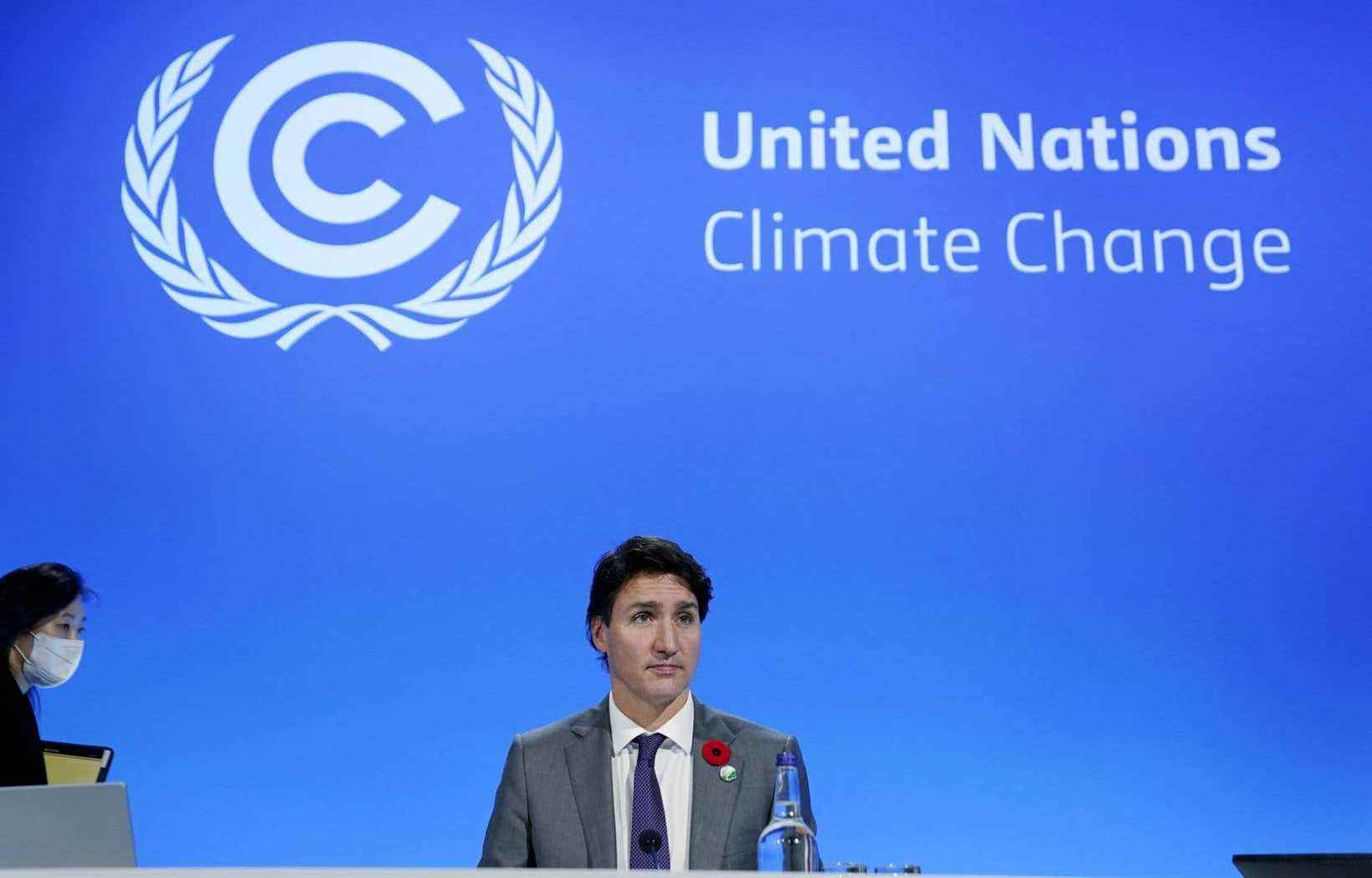Prime Minister Justin Trudeau urged the world to cover 60% of global greenhouse gas emissions with a price on pollution in 2030, during a speech on Tuesday as part of the COP26 climate talks in Glasgow.
Mr. Trudeau began the second and final day of the annual climate negotiations by co-hosting a carbon pricing event, showcasing Canada’s carbon price as one of the most ambitious and, by his own words, stringent in the world. .
He started the first day with a speech calling on the rest of the world to follow Canada’s lead and negotiate a global minimum carbon price.
He compares the idea to the 15% corporate minimum tax that more than 130 countries have now signed on to in an effort to prevent large multinational corporations from avoiding taxes by funneling their profits to low-tax countries. ‘taxation.
See also: Three challenges of COP26
Carbon pricing has been a political minefield in Canada, with opposing Conservative premiers leading the fight to the Supreme Court, which ruled in favor of the federal government.
The Conservative Party of Canada, long opposed to carbon pricing, is itself now engaged in an internal debate on the substance.
Chief Erin O’Toole has vowed to implement another version of a carbon price in the recent election with a system similar to a reward card.
The new Minister of the Environment Steven Guilbeault said on Monday that he believes this edition of the COP could be the one that will trigger the start of a real negotiation towards a global carbon price.
He clarified that there was a level of interest in the idea that he had never seen before.
The Minister for the Environment indicated that “it was not a done deal” adding that the Glasgow conference has the potential to be the moment when we really start to work on the development of such an initiative.
Carbon pricing in Canada started in 2019 at $ 20 per tonne and is expected to reach $ 170 per tonne by 2030. The current price of $ 40 per tonne adds about 8.8 cents per liter of gasoline, or about 3 cents per liter of gasoline. , $ 50 more each time you fill your car with 40 liters of gasoline.
But the money is returned to citizens during tax returns to make the program income neutral. The idea is that a carbon price should not leave families less money, but encourage them to find ways to reduce the use of fossil fuels by increasing their cost.
It also applies to natural gas, propane, jet fuel and any other liquid fuel, depending on the weight of greenhouse gas emissions produced during the combustion of this fuel.
Canada’s national price only applies to provinces that do not have an equivalent provincial policy in place: Alberta, Saskatchewan, Ontario and New Brunswick.
A separate policy for large industrial emitters uses the same price but is charged only on a portion of the total emissions produced, rather than on the fuels these emitters purchase to run their industrial machinery.
The international environmental group “Citizens Climate Lobby” says there are 64 carbon pricing policies around the world, including direct pricing on carbon emissions and cap-and-trade systems.
More than 20 of its systems are national policies, and the rest are subnational, including American states like California, Canadian provinces like Quebec, and cities like Tokyo.
The United States and Australia are the only two fully developed economies without some form of carbon pricing.
